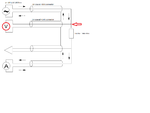LokoGT
Newbie level 3
Hello,
I need measure voltage in cicruits, see figure
Coaxial electrical properties can not be ignored.
I believe that it is necessary to use instrumentation amplifier, it is so?
What results can be obtained with instrumentation amplifier built from AD8620+AD8610 Gain=1 , see datasheet Figure 68 page 20
How to solve the problem as precisely as possible

I need measure voltage in cicruits, see figure
Coaxial electrical properties can not be ignored.
I believe that it is necessary to use instrumentation amplifier, it is so?
What results can be obtained with instrumentation amplifier built from AD8620+AD8610 Gain=1 , see datasheet Figure 68 page 20
How to solve the problem as precisely as possible

